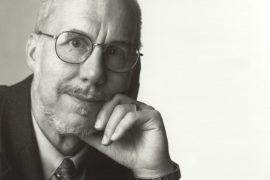I’ve been asking myself this question, “What role does creation – nature, wilderness areas, the physical world, getting away from urban environments – play in the lives of students and in the rhythms of student ministries?” My answers have come through two different, yet connected, sets of stories. Then finally land with a brief reflection on the Psalms.
[perfectpullquote align=”full” cite=”” link=”” color=”” class=”” size=””]The heavens declare the glory of God;
The skies proclaim the work of his hands.
Day after day they pour forth speech;
Night after night they reveal knowledge.
Psalm 19:1-2[/perfectpullquote]
In the welcome center of our church, there is a pass‐through window with a big counter connecting the kitchen to the lobby. I was sitting on this counter next to Jeff, a high school freshman who is in our youth group. It was our regular snack time after the meeting ends and most of the students were playing a disorganized game of lobby volleyball just in front of us. A handful of leaders and students were chatting in groups around the room. In the midst of these snacks and games and casual conversations, Jeff was describing to me some of the bullying he experiences at school. He shared some of the things kids say to him, like:
“You’re worthless.”
“You’re so repulsive.”
“Why don’t you just kill yourself?”
“Don’t you know everyone would be happier if you weren’t here?”
If that isn’t hard enough, he described how some of these students are actually people he calls “friends.” He wants them to be friends because there is no one else that he can talk to between classes, or sit with at lunch. But, as might be expected, it simply breaks him down when his “friends” are also his bullies. He then shared how, at times, his mother says things along the same lines. She tells him that if he were a better person, they wouldn’t say those things to him. She tells him that he isn’t the son she wanted.
There is another student in our group whose name is Valerie. She asked if we could talk sometime. When we finally did get together, we chatted for a while before I asked, “So, what did you want to talk about?” She was clearly hesitant. I have sat across many tables with many students sharing more burdens and question than I care at times to remember. I considered, even braced myself, for whatever it was she was about to say. Would it be bullying, cutting, depression, friends, boyfriends?
She said, “So, I’m gay. I’ve known it for quite a while, but I decided it is time to start telling people.” We talked about the friends she had already told, her experiences sharing, and some of the fears she was already overcoming. Then she landed on the one thing that was clearly most troubling. “I’m waiting to tell my dad, I’m pretty sure he will think I am broken somehow… Do you think this means I am broken?”
There is a nearly endless trail of wounds and fears that trouble American high school students day after day. These short stories capture only a glimpse of the weight teenagers carry on their shoulders and attempt to hold up along with their friends, families, and faith communities. If I were to name a single theme, to somehow summarize the disparate and varied challenges they face, I would say this: Students regularly hear destructive voices and struggle to hear any that give life.[perfectpullquote align=”right” cite=”” link=”” color=”” class=”” size=””]Students regularly hear destructive voices and struggle to hear any that give life.[/perfectpullquote]
Not only are they hearing these damaging voices around them, but they also struggle to keep their own voices from repeating the same lies. Students daily listen to voices that tell them they are worthless, and over time find their own voice speaking in agreement. Crammed into crowded hallways in schools with ever increasing standards and pressures to perform, these kids live in a cacophony. And the relentless noise is killing them.
As someone committed to creating communities and experiences where students can find healing amidst brokenness, find vitality in destructive environments, my central question has become: What voice will pierce this deafening roar and how can I help students hear that truer, life‐giving voice?
[perfectpullquote align=”full” cite=”” link=”” color=”” class=”” size=””]The heavens are yours, and yours also the earth;
You founded the world and all that is in it.
You created the north and the south;
Tabor and Hermon sing for joy at your name.
Psalm 89:11-12[/perfectpullquote]
Hartenstein Lake is a three‐mile hike from the Denny Creek Trailhead, just outside Buena Vista, Colorado. It is a small lake, barely a hundred yards across, but tucked into a Colorado mountain valley it’s a treasure. It was our second night on a three day backpacking trip when our group of twenty high school students and leaders were getting ready for evening campfire. The fire ring was set back from the lake and up on a small hill. Most of the trees in the area were coniferous and scrub oak bushes made a full undergrowth. There was a sizeable grassy patch around the fire ring with good benches fashioned from fallen trees. The fire ring itself was a circle of neatly piled rocks. Just the way a maintained backcountry campfire ring should be. Whenever silence settled over the campsite, you could hear the two or three small tributaries—seasonal during the snow melt—trickling into the lake and also Denny Creek running down toward the Arkansas river. As a pastor seeking to cultivate health and vibrancy in students lives and as someone who personally finds refreshment in the outdoors, this seemed an ideal, life giving, soul‐feeding place to be.
The group was meandering from our tent sites up to the fire ring on a little trail that skirted the edge of the lake. One by one, the group began stopping, turning, and looking toward a small peninsula on the lake. A bull moose had wandered out of the reeds on the south edge of the lake and was casually munching vegetation while rambling along the shoreline. The first time I remember seeing a moose was on a trip to the Boundary Waters Canoe Area (BWCA) in Northern Minnesota. We were in the boat and only glimpsed it on a far shoreline. Years later I was back in the BWCA paddling a tributary into Sawbill Lake when a huge pair of antler emerged from the water only a couple feet from my canoe. Our party of six paddlers stopped and watched for almost thirty minutes while this bull repeatedly dove under water, resurfacing always with a mouth full of weeds. Every time his antlers broke the surface a chill ran down my arms for being so near to such a gracefully powerful creature.
As the students at Hartenstein whisperingly pointed eyes to the lake, there were stifled dances and teenage squeals. A couple students failed to stifle their excitement. They had never seen a moose before. We all simply watched. There was no commentary, no need for explanation or description. 14,197 foot Mt. Yale stood in the background with the setting sun reflecting off its face. Its trail, which we had hiked that morning, was barely visible from our vantage across the valley floor. You could hear the bull’s smacking lips as it ate the greens from the shore. Its hooves made a gentle sucking sound as they pulled up from the mud. Given the chance, we would have watched for hours. The moose eventually decided dinner was over and more gracefully than expected galloped a hundred yards along the shoreline before turning and disappearing into the woods.
[perfectpullquote align=”full” cite=”” link=”” color=”” class=”” size=””]Praise God, sun and moon,
Praise God, all your shining start.
Praise God, you highest heavens
And you waters above the skies.
Let them praise the name of the Lord,
for at God’s command they were created,
and God established them for ever and ever‐
issued a decree that will never pass away.
Psalm 148:3-6[/perfectpullquote]
What connects these two sets of stories? How might a student watching a moose enjoy its dinner find any resource for dealing with the burdens and weights of the destructive voices in their lives? The answer is given in a patter found throughout the Psalms. The Psalms repeatedly tell of a song that creation endlessly sings. All of creation has its own voice that it uses to sing praise to its maker.
At the end of my week long adventure trip with high school students, I asked them to answer one simple question before getting on the bus, “What was the most impactful part of this trip?” We had done a lot of things together: white water rafting, three days of backpacking, summiting a fourteen thousand foot mountain, sharing stories & spiritual testimony, singing together under a glorious banner of stars. Yet, the most common answers from the students had a clear, unified theme: the silence, solitude, spending time alone, the quiet, the stars.
[perfectpullquote align=”right” cite=”” link=”” color=”” class=”” size=””]I will never stop taking students into “wild” places. I will never stop getting them out of the city and into remote, pristine, and untouched space. I will never stop prioritizing this aspect of youth ministry.[/perfectpullquote]
At first glance, these answers suggest a desire in students to get away from the buzz of their everyday lives. With technology, crowded classrooms and endless responsibilities from school to activities and sports, they simply wanted silence. However, as I consider their answers further I realize that it’s not actually the silence or the quiet that they love. It isn’t what they do not hear, but rather what they do hear. Outside, away from it all, I believe my students were hearing the one voice that can break through the noise and speak life into their very being.
Soaking in the worship song of creation, hearing the glorious refrains of wind and stars and forest and mountain, students are able to hear the voice of their Maker. This voice is always present and always speaking, but too easily drowned out by the clanging commotion all around. I will never stop taking students into “wild” places. I will never stop getting them out of the city and into remote, pristine, and untouched space. I will never stop prioritizing this aspect of youth ministry because God’s creation, in a way far more pronounced than others, affords students the opportunity to learn—to practice—hearing the voice of the One that gives life.





